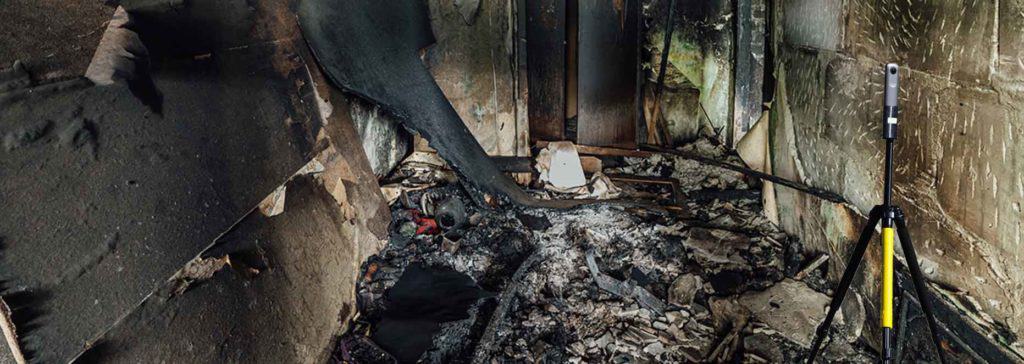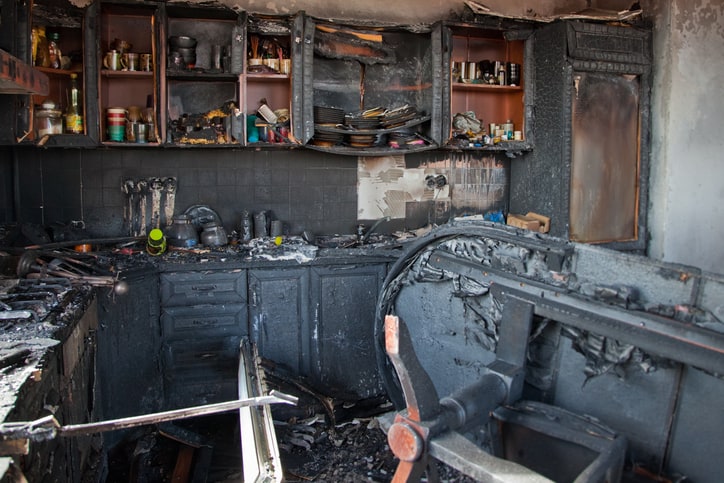
Arson cases can be difficult to investigate and prosecute. An arson conviction requires a thorough investigation of the fire scene, meticulous scene documentation and evidence collection, follow-up on all interviews/leads, and a strong courtroom presentation.
Part One of this blog series discussed what goes into a successful fire investigation, and the tools used for evidence collection and storage. This blog, Part Two, will dive even deeper into the next steps. Read about four scenarios where OSCR360 can contribute to a successful arson conviction.
The Next Steps in a Fire Investigation: Four Factors that Contribute to an Arson Conviction
1. Trial Preparation
As an arson investigator, it is almost inevitable that you will be called as an expert witness if your case proceeds to trial. The defense will do everything in their power to discredit your testimony.
You must show up to your trial prepared to answer questions aimed to discredit you on the stand. In addition to speaking to your qualifications as a fire investigator, a courtroom presentation tool is invaluable for trial preparation. OSCR360 allows investigators to revisit the scene, and organize all digital evidence. As an investigator, you can speak to your process at the scene and show courtroom audiences a walkthrough of crime scene.
When you show up to trial with a well-ordered OSCR360 presentation, the defense (and the courtroom audience as a whole) recognize that you’ve thoroughly done your homework, come to your own conclusions about the case, and have invested time and energy into presenting the facts.
“The use of OSCR, in my opinion, worked so well hand-in-hand with the jury members. If the jury had a question about the OSCR spherical image that I took of the crime scene – they wanted to see this, or look over here again – I could stand there and move the image to show exactly what they were looking for. Then, when another juror asked a question, I could spin around again…I could show it, it gave them exactly what they wanted, and they were satisfied with it.”
Retired NYS Crime Scene Investigator John Dobies
2. Evidence Organization
The organization of your evidence is critical to ensure that all jurors hearing the case have the same mutual understanding of the case. The last thing you want is a confused juror. OSCR360 presentations visually and systematically walk viewers through the case from start to finish. All photos, multimedia evidence, maps, and diagrams are logically organized within the OSCR software, so there is no jumping back and forth between pieces of evidence or areas of the fire scene. It all makes sense.

OSCR360 was used to document and organize evidence in the closing arguments of the Rideout Homicide Trial. This case tried 4 suspects together, and OSCR assisted in organizing over 700 pieces of evidence.
3. Courtroom Communication
The phrase “a picture is worth a thousand words” really rings true here. No amount of verbal explanation will ever have quite the same impact as taking the courtroom on a virtual tour of the scene. Instead of attempting to describe the scene to the jury, familiarize the jury with the scene using photos, diagrams, maps, and other demonstrative exhibits.
“OSCR360 was influential…because it allowed me to take the jury to the scene, virtually. OSCR helped me to answer jurors’ questions and support investigator testimony by explaining details of the case in complete 360-detail. You could tell the jurors instantly ‘got it.’”
NYS District Attorney
4. Statute of Limitations
“Cold Case is Solved after a Decade of Investigation.” We’ve all seen similar headlines, and they each beg the question of statute of limitations for various crimes. The statute of limitations does vary from state-to-state and depends on the particular arson charges being filed. That being said, arson crimes generally come with a longer statute of limitations than many other crimes – or even no limits whatsoever.
What this means for fire investigators is that the work you are doing may seem fruitless today if you cannot solve the case… but your work could very well have a huge pay-off months, years, or even decades down the road. New evidence can always be brought to light.
Serial arsonist Thomas Sweatt evaded arrest for over two years since his first arson. It took ten years for serial arsonist John Orr to be indicted. The point? Both arsonists were eventually caught and convicted. Justice was served.
Should your case go to trial into the future, think of the power that your 360-degree OSCR photos will have in that future courtroom. The physical environment of the arson scene may have changed significantly. A new structure could be standing, trees could be planted, or a parking lot constructed in its place. But, when it is time to show the jury the crime scene, your OSCR360 photos will let them virtually walkthrough the scene exactly as it appeared on the day of investigation. The value is immense – and may be the difference maker in obtaining an arson conviction.
“This is absolutely phenomenal. Juries want to see the scene and sometimes we end up doing scene visits with our juries because they so badly want to see the scene. As soon as that person sits in the jury box, they think they’re instantly an investigator and are trying to evaluate if you did your job. This allows them to think they’re an investigator and also take them to the scene remotely. I absolutely love this.”
Northern California Fire Investigator
If we’re realists, we understand that it is unlikely that every arson case will be solved, let alone prosecuted. Unfortunately that is just the problematic nature of arson cases. However, the role of an arson investigator isn’t to be a realist…the role is to pursue justice, whether that justice comes today or a decade from now. While we can’t predict the future, we do know that at a fire scene, OSCR takes moments to use and can potentially yield lasting benefits in the courtroom.